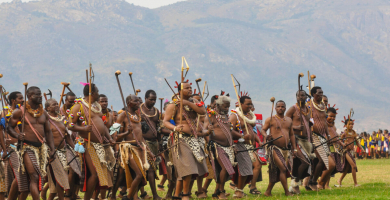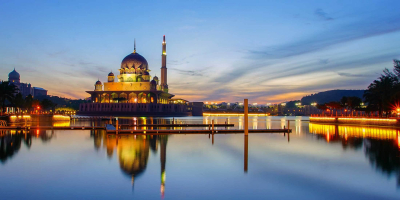Top 10 Argentina Culture, Customs and Etiquette
Argentina is a large country with a large cultural footprint. Of course, the enticing tango is Argentina's most famous cultural export, but the country's ... read more...culture covers so much more. There is a particular blend of Latin American and indigenous traditions here, which is frequently obscured by a heavy impact of European norms. Indeed, Argentines strongly identify with their European past, which sets them apart from the rest of Latin America, with a particularly strong cultural effect left over from the Italian and Spanish settlers who formerly flocked to the country in droves. Here are some of the Argentina Culture, Customs and Etiquette so that when you visit, you may fully immerse yourself in the country's unique character.
-
Argentina has at least 40 spoken languages, with Spanish being the most common. Others include indigenous and other immigrant languages; some are extinct, while others are endangered, and are spoken by elderly individuals whose descendants do not speak the languages. Spanish is the language that virtually all of Argentina's population understands and speaks as a first or second language. According to the most recent estimates, the population is now larger than 45 million.
Rioplatense, often known as "Argentine Spanish," is the most common dialect, with speakers concentrated mostly in the Rio de la Plata basin. Argentina is one of the few Spanish-speaking countries where the pronoun vos is virtually universally used instead of the pronoun tú. (Spanish for "you"). This can be seen as one of the Argentina Culture, Customs and Etiquette.
English is another major language in Argentina, and it is required in basic school in several districts. Argentina is the only Latin American country classified as having "high aptitude" in English, ranking 15th globally in 2015, according to the English Aptitude Index. Other major languages in Argentina are Guarani and Quechua, which have 200,000 and 65,000 speakers, respectively. Argentine Sign Language (LSA), which is signed by deaf communities, is another native language. It first appeared in 1885.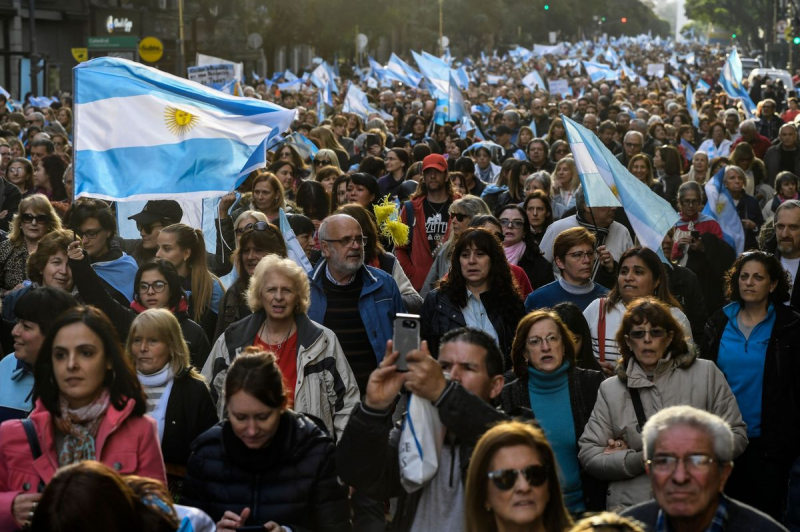
https://www.bloomberg.com/ 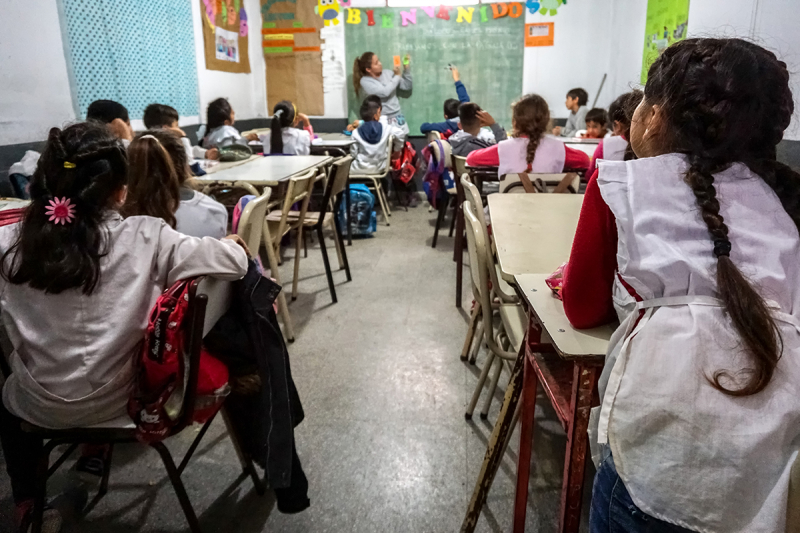
https://globalpressjournal.com/ -
Argentina has a rich literary heritage and one of the most active publishing companies in the region. Since the 1850s, when Argentina became a completely united entity with a strong constitution and a determined nation-building plan, Argentine writers have played a key role in Latin American literature. The conflict between the Federalists and the Unitarians set the tone for contemporary Argentine writing.
The ideological contrast between José Hernández's gaucho epic Martn Fierro and Domingo Faustino Sarmiento's Facundo is a great example. Hernández, a federalist, was opposed to centralization, modernization, and Europeanization. Sarmiento argued that immigration was the only way to prevent Argentina from falling under the dominion of a small number of dictatorial caudillo families, saying that such immigrants would make Argentina more modern and open to Western European ideas, and thus a more wealthy country.
Argentina's literature during the time was fervently nationalist. It was followed by the modernist movement, which originated in France in the late nineteenth century, and vanguardism, with Ricardo Güiraldes as an essential reference. In metaphor and philosophical argument, its most acclaimed writer, Jorge Luis Borges, created new ways of looking at the modern world, and his impact has stretched to writers all over the world. Borges is best known for his short story collections Ficciones and The Aleph.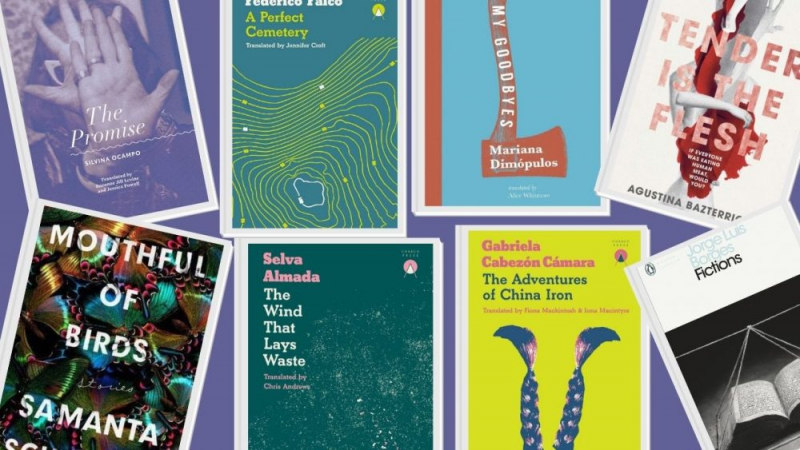
https://booksandbao.com/ 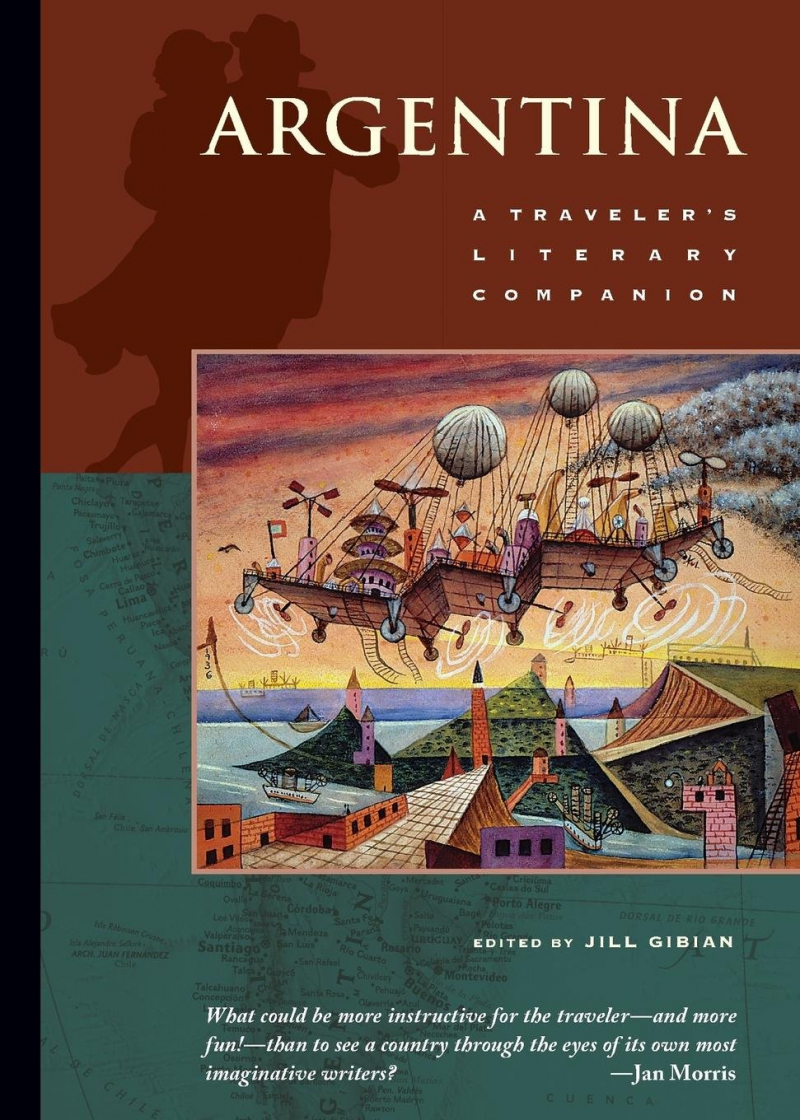
https://www.amazon.com/ -
Argentina's architecture may be traced back to the early days of Spanish colonialism, while the country's towns achieved their pinnacle in the 18th century. Despite urban growth, cities such as Córdoba, Salta, Mendoza, and Buenos Aires have preserved most of their old Spanish colonial architecture. In Buenos Aires, the simplicity of the Rioplatense baroque style may be seen in the works of Italian architects such as André Blanqui and Antonio Masella, as well as in the churches of San Ignacio, Nuestra Seora del Pilar, and the Cabildo.
After the battle for independence at the beginning of the nineteenth century, Italian and French influences intensified, yet the academic style survived until the early decades of the twentieth century. Attempts at renovation occurred during the second half of the nineteenth century and the beginning of the twentieth, when European tendencies penetrated the country, as reflected in numerous important Buenos Aires buildings, including the Santa Felicitam Church, designed by Ernesto Bunge; the Central Post Office and Palace of Justice, designed by Norbert Maillart; and the National Congress and the Colón Opera House, designed by Vittorio Meano.
The architecture of the second half of the twentieth century continued to adapt French neoclassical architecture, such as the National Bank of Argentina's headquarters and the NH Gran Hotel Provincial, both built by Alejandro Bustillo, and the Museo de Arte Hispano Fernández Blanco, designed by Martn Noel. Argentina's cities have a diverse architectural style. Each house has a unique style, and it is uncommon to locate a tract housing neighborhood. This is one of the Argentina Culture, Customs and Etiquette that you should know.
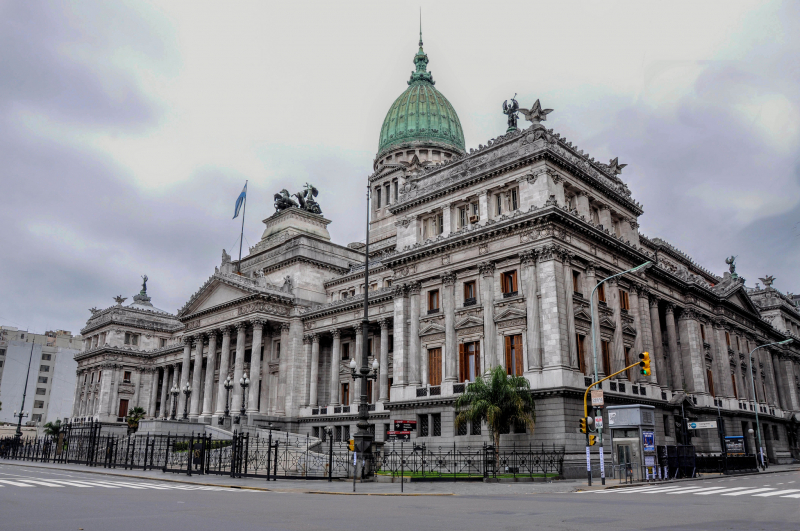
https://theculturetrip.com/ 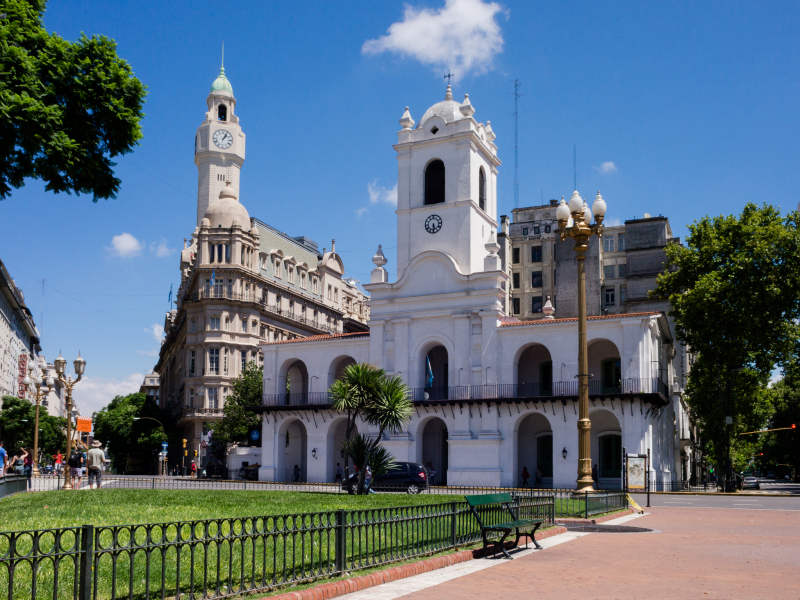
https://theculturetrip.com/ -
Argentina is extremely proud of its country and culture. They are well-educated and intelligent individuals who prefer to be perceived as international and progressive. Argentinas identify with Europeans because 85% of the country's population is from Italy, Spain, Austria, France, Germany, the United Kingdom, Portugal, Russia, Switzerland, Poland, and the Middle East. Argentina is supposed to be a nation of Italians who speak Spanish and think they're British living in Paris. Families are highly cherished and hold conservative ideals in this predominantly Catholic (93%) country. Argentina has some unusual manners and etiquettes that everyone should be aware of before visiting.
Meeting and Greeting
- When meeting someone, a handshake and a nod convey respect.
- Friends and acquaintances frequently embrace and kiss on the cheek.
Body Language
- When speaking, Argentines are touchers and stand near to one another. Do not back down.
- The motions "OK" and "thumbs up" are deemed obscene.
- Hitting the left hand's palm with the right fist signifies "I don't believe what you're saying" or "That's ridiculous."
Corporate Culture
- Personal relationships are crucial and must be established before conducting business.
- Argentines frequently require multiple sessions and long debate to reach agreements.
- Decisions are taken at the highest levels. Attempt to schedule a meeting with high-level personnel.
- Guests are greeted and escorted to their seats for a conference. The visiting executive is sitting across from the Argentine executive.
- Maintain a pleasant demeanor during business meetings, maintain eye contact, and limit the usage of gestures. Don't try to hard sell anything.
- Be prepared for some small talk before getting down to business.
- Argentina's negotiators are tough. Concessions will not come easy or quickly. Negotiations will be shortened if you have good ties with your counterparts.
- Contracts are lengthy and comprehensive documents. A contract is not considered complete until all of its components are signed. Any part of the agreement can be renegotiated. Make a written record of everything.
- A contact in Argentina is vital for navigating government bureaucracy.
- Be on time for business meetings but be prepared to wait up to thirty minutes for your counterpart, especially if you are dealing with someone significant.
- Argentina's business tempo is slower than that of the United States. A successful meeting may run considerably longer than planned, even if it means postponing the next appointment.
Dining and Entertainment
- Meals are occasions for socialization. If your Argentine colleague brings it up, avoid "talking business."
- Restaurants are commonly used for business meals. When you are the host, make arrangements for payment ahead of time. If this is not possible, insist on paying the bill when it arrives.
- At the table, do not use toothpicks, blow your nose, or clear your throat.
- Raise your hand with your index finger extended to summon a waiter.
- Unless your host requests it, do not order imported booze. Taxes are astronomical.
- Pouring wine is a complicated ceremony in Argentina.
- Arrive thirty to sixty minutes late for social occasions. Arriving late to a gathering is rude.
- Remember to arrive on time for lunch, the theater, and soccer.
Dress
- Argentines are fashion-conscious people. If you want to make a good impression, dress appropriately. It is best to dress conservatively and modestly.
- Women are expected to dress with flare while remaining professional.
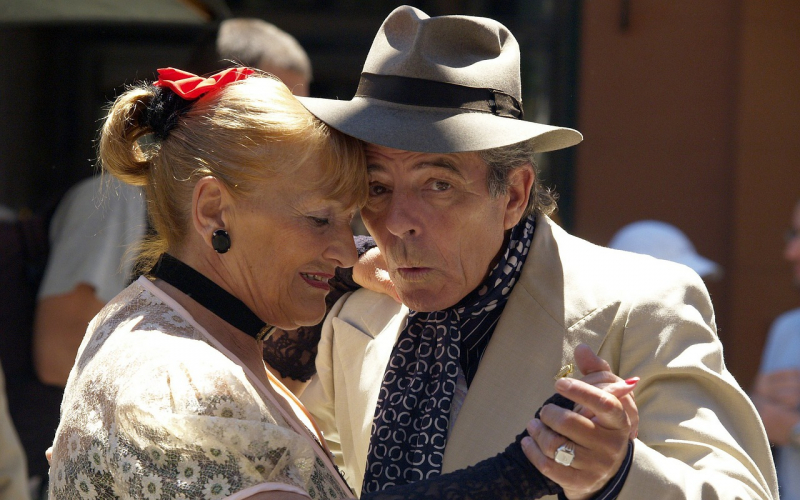
https://studentsgoabroad.org/ 
https://www.commisceo-global.com/ -
Argentina has been overwhelmingly Christian for much of its history, up to and including the present day. Roman Catholicism is the country's largest Christian denomination. This historical context owes a great deal to the Spanish influence brought about by newly conquered territories. However, throughout the twentieth century, immigration brought other Catholics and denominations from various regions to Argentina. The country has the largest Muslim and Jewish communities in Latin America, with the latter being the world's seventh most populous. Argentina is a member of the International Alliance for Holocaust Remembrance.
According to a 2005 survey, 24% of people regularly attend religious services, while 10.3% are unaffiliated. According to a 2015 Pew Research Center survey, only 35% of Argentines consider religion to be very important in their lives. As of 2019, 79.6% of Argentina's population is Christian, 62.9% are Roman Catholics, 15.3% are Evangelicals, 1.4% are other Christians, 18.9% are unaffiliated, and 1.2% belong to other religions. According to a 2018 Pew Research Center report, 37% of Argentines believe religion is not very or not at all important in their lives. This figure has been consistently higher than 30% since at least 2007.
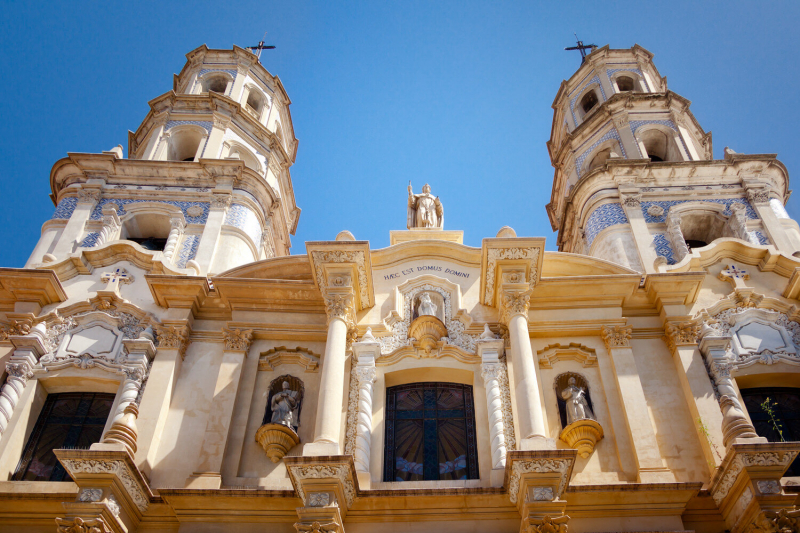
https://www.travelphotographyguru.com/ 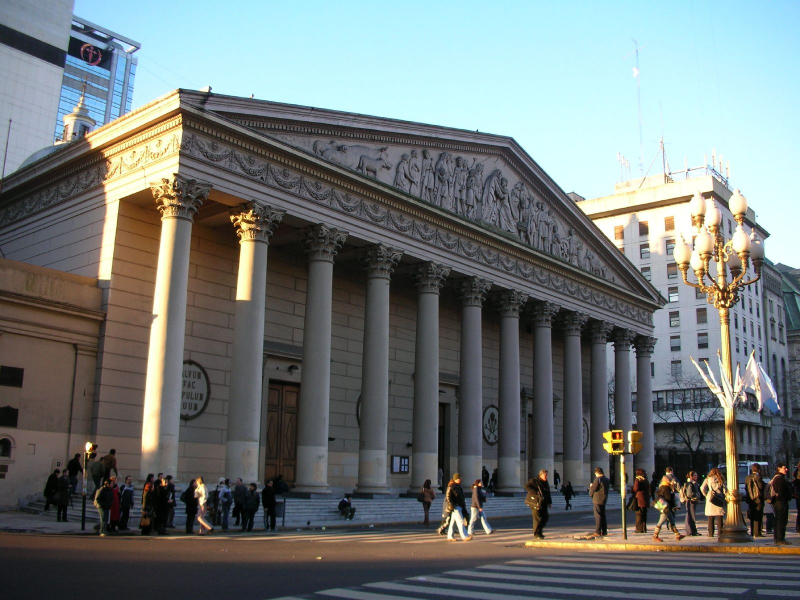
https://en.wikipedia.org/ -
Tango, a Rioplatense musical genre with European and African influences, is an international cultural symbol of Argentina. Tango's golden age paralleled jazz and swing in the United States, with large orchestras led by Osvaldo Pugliese, Anbal Troilo, Francisco Canaro, Julio de Caro, and Juan d'Arienzo. Astor Piazzolla popularized Nuevo tango after 1955, a subtler and more intellectual trend for the genre. Tango is now popular all over the world, thanks to groups like Gotan Project, Bajofondo, and Tanghetto.
Argentina developed strong classical music and dance scenes, producing renowned artists such as composer Alberto Ginastera, violinist Alberto Lysy, pianists Martha Argerich and Eduardo Delgado, and pianist and symphonic orchestra director Daniel Barenboim; Tenors José Cura and Marcelo lvarez, as well as ballet dancers Jorge Donn, José Neglia, Norma Fontenla, Maximiliano Guerra, Paloma Herrera, Marianela Nez, Iaki Urlezaga, and Julio Bocca, were honored.
In the 1930s, a national Argentine folk style emerged from dozens of regional musical genres, and it went on to influence the entirety of Latin American music. Some of its interpreters, such as Atahualpa Yupanqui and Mercedes Sosa, have received international acclaim. Internationally famous singers in the romantic ballad genre included Sandro de América. Among the most internationally successful Argentine jazz musicians are tenor saxophonist Leandro "Gato" Barbieri and composer and big band conductor Lalo Schifrin. In the mid-1960s, Buenos Aires and Rosario became breeding grounds for aspiring musicians, and Argentine rock emerged as a distinct musical style.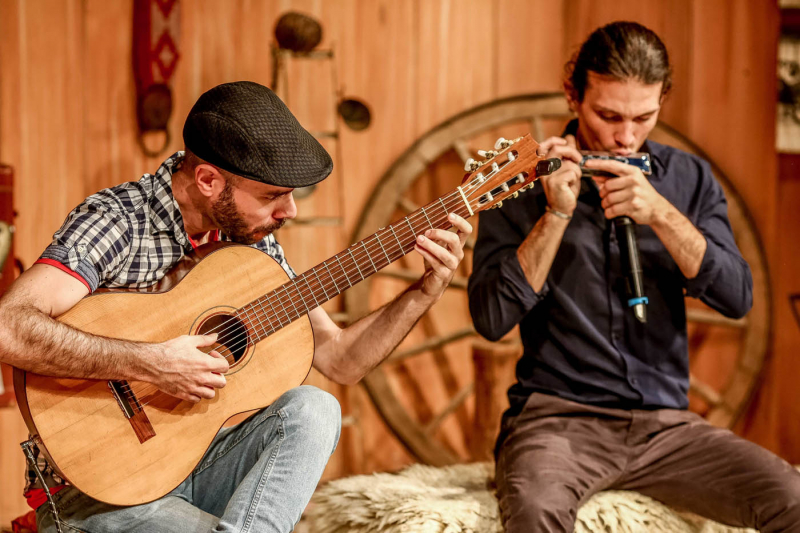
https://www.visitargentina.net/ 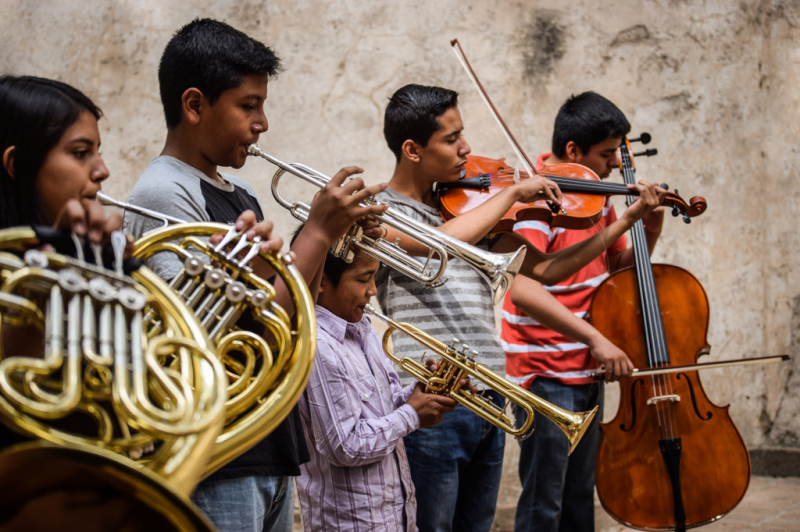
https://www.globalgiving.org/ -
It can be seen as one of the Argentina Culture, Customs and Etiquette. Argentine painters and sculptors have a long history that predates and follows the development of modern Argentina in the second half of the nineteenth century. Artistic production did not truly come into its own until after the overthrow of Juan Manuel de Rosas' repressive regime in 1852. Immigrants such as Eduardo Schiaffino, Eduardo Svori, Reinaldo Giudici, Emilio Caraffa, and Ernesto de la Cárcova left a realist legacy that is still felt today.
Impressionism did not emerge among Argentine artists until after 1900, and it never gained the popularity it did in Europe, though it did inspire influential Argentine post-impressionists. Realism and aestheticism continued to dominate Argentine painting and sculpture during this period, which was notable for the sudden fame of sculptor Lola Mora, a student of Auguste Rodin's.
Muralism, like in Mexico and elsewhere, became increasingly popular among Argentine artists. Benito Quinquela Martn was among the first to use his drab surroundings as a canvas, and his vaguely cubist pastel-colored walls painted in his Buenos Aires neighborhood of La Boca during the 1920s and 1930s have become historical monuments and Argentine cultural emblems around the world.With a strong sentimental streak in general, the Argentine public's taste for naive art and simple pottery cannot be overlooked. Since the time of Prilidiano Pueyrredón, naive artists such as Cándido López have captured the absurdity of war; Susana Aguirre and Aniko Szabó, the eccentricities of everyday neighborhoods; Guillermo Roux's watercolors, a circus atmosphere; and Gato Fras, childhood memories. Florencio Molina Campos's satirical depictions of gaucho life have become collectors' items.
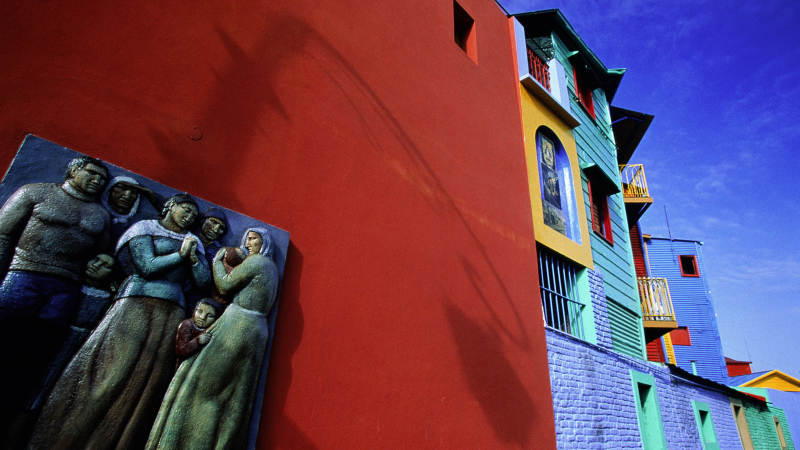
https://www.tripsavvy.com/ 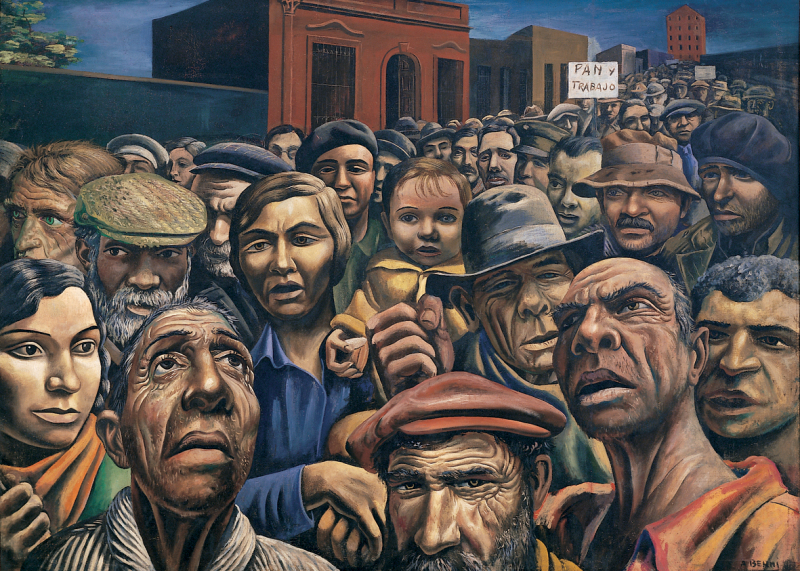
https://theculturetrip.com/ -
Argentine dance is a popular dance style that is practiced all over the world. Traditional rural dances characterize Argentine dance. Several Argentine dances originated in Argentina and are still performed today, the most popular of which is the Argentine Tango.
Argentine dance has become an important part of Argentina's culture over the years. The Argentine Tango, which is popular among tango dancers of all ages, originated in Buenos Aires. Argentine Tango is much more intimate than Modern Tango and lends itself well to dancing in small groups. The intimacy of the original dance is preserved in Argentine Tango. Then there's ballroom tango, which evolved from Argentine tango styles but was modified to fit into the ballroom dancing category. Ballroom tango employs techniques that differ from those used in smooth Argentine dances.
There are some significant differences between the Argentine tango and the tango seen in ballroom dancing. When you see both dances side by side, you will be able to tell them apart with ease. Argentine tango dancers stay in the same spot for a longer period of time than ballroom tango dancers. Ballroom tango is not as physically "close" as Argentine tango, which allows for more space between dancers; Argentine tango is more intimate, with bodies closer together. The melody of the music is more important in Argentine tango, while the bass of the music is more important in ballroom tango.Argentina's dances represent the emotions and lives of its people. Chamame, along with the very popular Argentine Tango, is one of the most popular forms of Argentine dance. Two dancers in a cheek-to-cheek embrace perform the Chamame. Another popular type of Argentine dance is cuarteto. Cuarteto is a fast-paced dance performed by large circles of dancers moving counter-clockwise.
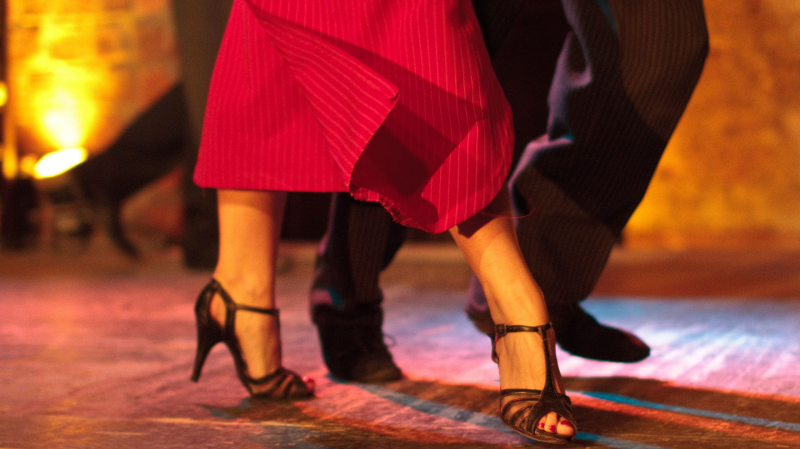
https://cdn.shopify.com/ 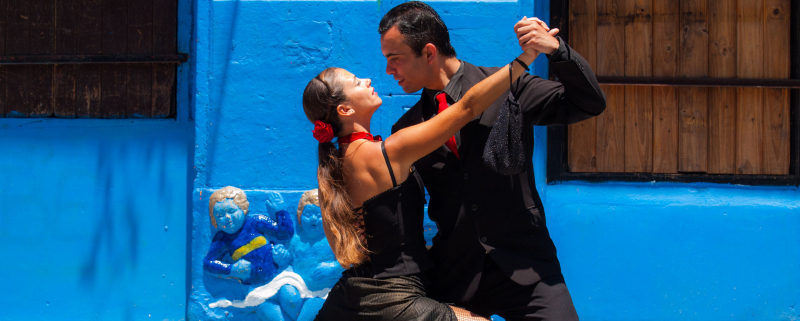
https://www.cazloyd.com/ -
Many people in Argentina, primarily in rural areas, dress in traditional gaucho costumes. Gaucho refers to cowboys in South American countries such as Argentina, Uruguay, and Brazil. Some people in the city wear this costume, but it would be incorrect to assume that all people in Argentina wear these types of clothes all the time - they do not.
Argentina's traditional footwear includes alpargatas. This shoe is made of canvas and has a rope sole. Rubber soles are occasionally used. This type of shoe is available in a wide range of colors and patterns. They are very sturdy and strong, and they last a long time. These characteristics made these shoes very popular, especially among people who worked outside and needed durable footwear.
Men frequently wear bombachas de campo, though they are unisex and can also be worn by women. Because of their durability and longevity, these are preferred for activities such as horseback riding. Men and women both wear woollen ponchos. Ponchos can be made from a variety of wools and come in a variety of colors and patterns. A poncho is a type of unisex clothing. There are no arms; instead, it is worn over the head and around the neck, with the length covering the upper body as well as the arms. People in Argentina wear ponchos to keep warm and protect themselves from the cold winter weather.
Men frequently wear apron-like garments. These are both useful and protective. They fasten with a buckle and are long, almost reaching the floor. This item is known as a tirador. Traditional Argentinean attire also includes wide-brimmed hats. They are worn by both men and women and help to protect the face and eyes from harsh sunlight.
People from all over the country can wear the traditional costumes for special occasions such as weddings, festivals, heritage events, and other celebrations. In the countryside, dress standards are more rustic, authentic, and traditional. The more one travels into rural areas, the more traditional the clothing becomes. Many rural residents still dress in traditional Argentinean attire today.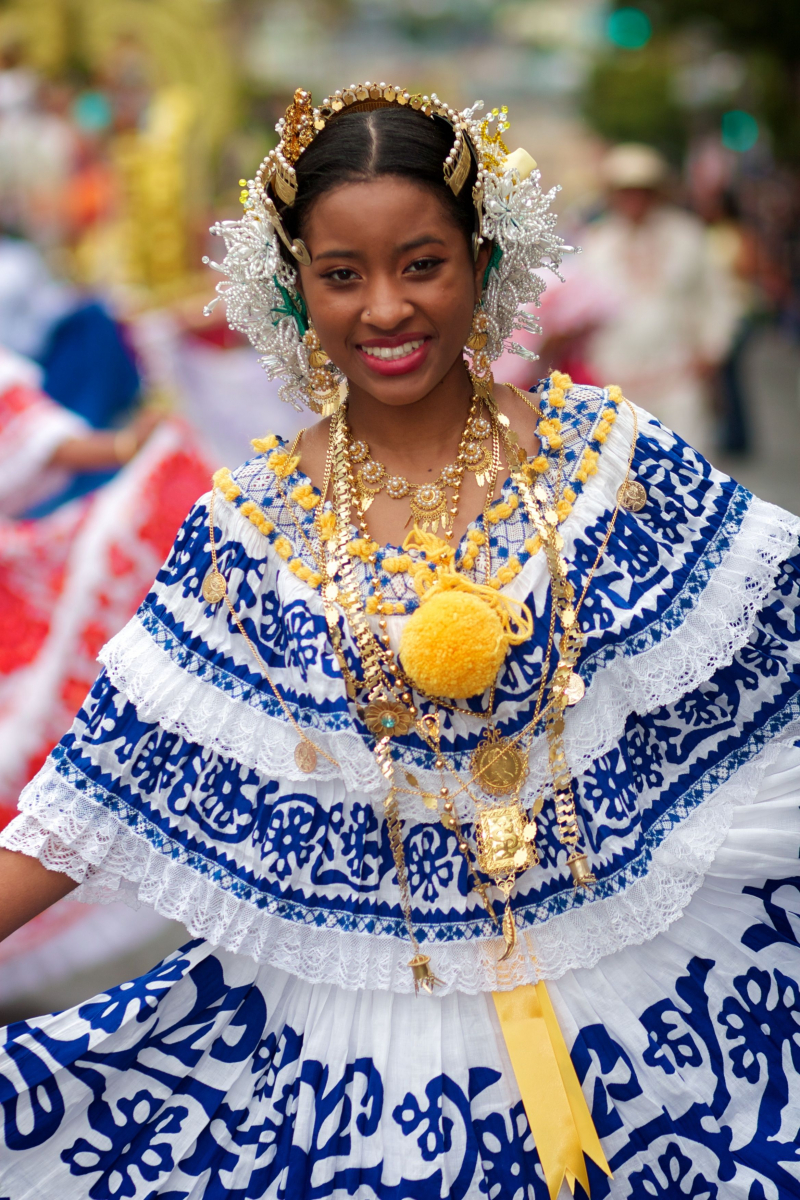
https://www.pinterest.com/ 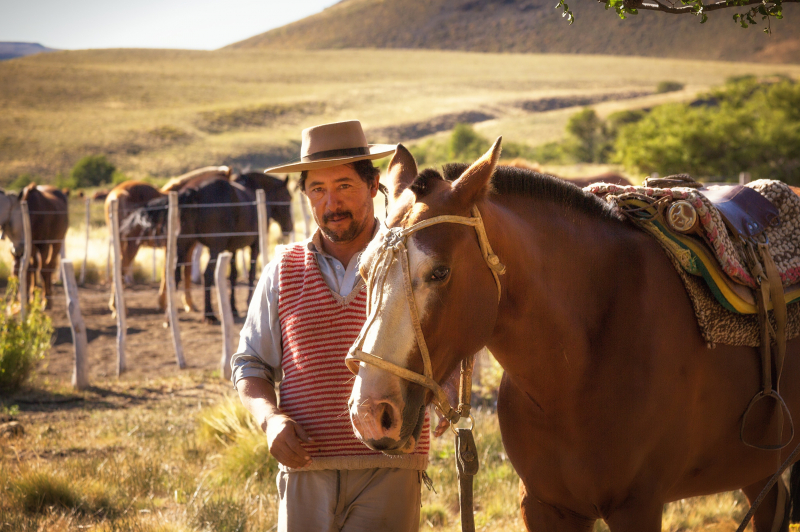
https://www.ranquilco.com/ -
Pato is Argentina's official national sport, though it is not widely practiced. It is played on horseback with a six-handle ball. Argentina's most popular sport is football. The national football team has 25 major international titles to its name, including two FIFA World Cups, two Olympic gold medals, and 15 Copa América titles. Over a thousand Argentine players play in foreign leagues, the vast majority of whom are in European football leagues. There are 331,811 registered football players, with an increasing number of girls and women, and they have held their own national championships since 1991, winning the South American championship in 2006.
Basketball is the second most popular sport; NBA and European league players include Emanuel Ginóbili, Andrés Nocioni, Carlos Delfino, Luis Scola, Pablo Prigioni, Juan Ignacio Sánchez, and Fabricio Oberto. The national basketball team won gold in the 2004 Summer Olympics and bronze in 2008. The International Basketball Federation currently ranks Argentina third.
Argentina has a long history of success in auto racing. Juan Manuel Fangio is widely regarded as the greatest driver of all time, having won five Formula One world championships with four different teams and winning 102 of his 184 international races. Oscar Alfredo Gálvez, Juan Gálvez, José Froilán González, and Carlos Reutemann were also notable racers. With four Olympic medals, two World Cups, a World League, and seven Champions Trophy, the national team Las Leonas is one of the most successful in the world. Luciana Aymar is widely regarded as the greatest female soccer player in history.
Argentina is unrivaled in Polo, having won more international championships than any other country and having been beaten only twice since the 1930s. The Argentine Polo Championship is the most important international team trophy in the sport. The country is home to the majority of the world's top players, including Adolfo Cambiaso, the greatest player in Polo history. Tennis, handball, boxing, volleyball, and golf are also popular sports. This is considered as one of the Argentina Culture, Customs and Etiquette.
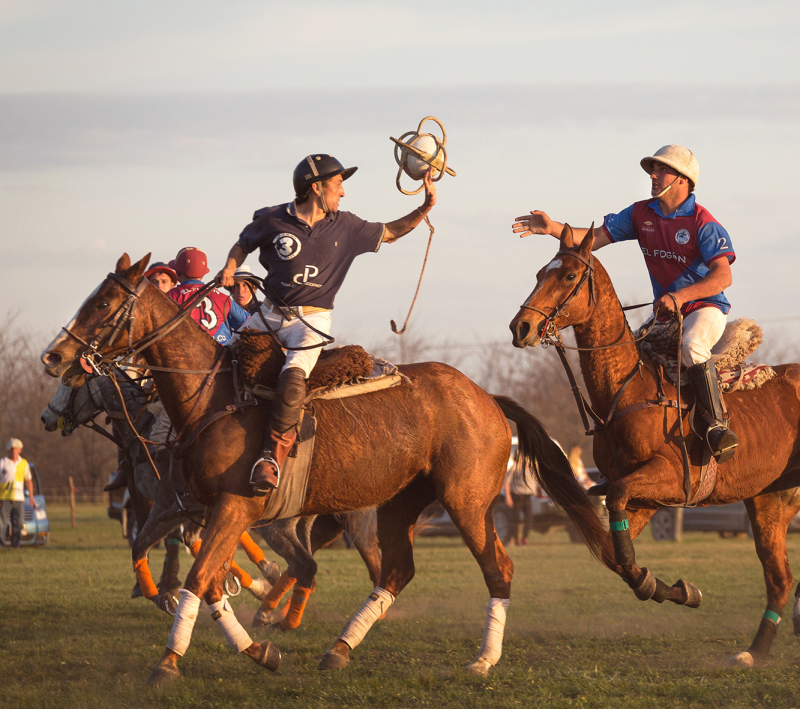
https://www.globetrotting.com.au/ 
https://the18.com/






























